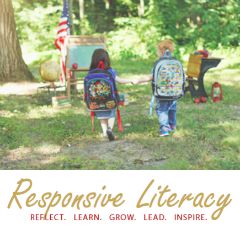***For those outside of D100, our PD hashtag is #iLearnbsd100 (hence the iLearned title).
Here are a few take aways from the last few days. We will call them some "light bulb" moments.
We have a really great staff in D100.
(OK, I kind of knew this already. But oh well!)
I have been talking to the Ignite presenters and +Bill Davini and +Sue Butler about the Standards Based Learning ignite sessions for the opening Keynote for a month or so. I have looked at their slides on a shared Google doc as they worked on their presentations, and I have spoken to some of them in person about them. I knew they would do fantastic. I believed in them, and their power to ignite us into the Standards Based LEARNING world, where feedback, formative assessment, purpose for learning and grading, collaboration around the standards, and student self assessment are part of our classrooms every day. They did FANTASTIC. Thank you, +Annie Forest, +Katie Wicklander , +Christina Betz, +Virginia Burdett, +Marilyn McManus, +Margaret Rigney and +Sally Mc Cormick for getting up in front of the district and sharing your work with us. Bill finished up with our new purpose statement for Standards Based Reporting.
Ignited!
The difference a year makes is amazing. Last year, we all were in our first year of reading and writing workshop, and it was hard to sometimes help keep people from feeling under water. It wasn't the shift to workshop that make that happen alone, but the new intense focus on teaching to the standards overwhelmed. Who's kidding who? It still overwhelms.
But, yesterday, +Meg Hanisch and I led a PD called "Close Reading to Transition to Book Clubs." It was an optional break out session, and we had 92 people sign up!!! The two things that last year made people feel like they wanted to scream (close reading and book clubs, not Meg and I- I hope...) drew people in to sign up for a voluntary PD session. Why? Because they feel READY. Our staff have worked so hard, and they are ready for the next step. D100, you are awesome! They even participated in our live Twitter chat, using the hashtag #bsd100BookClub.
Here are our presentation slides.
Check out our Storify archive of Tweets here:
Continue to use the hashtag #bsd100BookClub for anything that promotes book clubs and close reading, or anything in between.
Want to see (or share) videos of BSD100 book clubs in action?
Thanks, Meg!
Photo courtesy of +Colleen Noffsinger
My district is hosting our first EdTech conference, celebrating our student engagement through 1:1 technology and solid instructional decision making. If you want to come see our classrooms in action, sign up and join us on May 8th and 9th!
My take away yesterday? Everything looks better in shamrock green. Go Irish! :) Love the new shirts. The QR code on the sleeve even works! Thanks, +Shannon Soger and +Michelle Hauer.
Here is the link for more information on the conference:
Ok, this wasn't a light bulb moment, either.
The Hiawatha staff is awesome.
(There, I said it.)
We had 7 Hiawatha teachers present at Institute Day yesterday, between Ignites and break out sessions. So proud of you +Christina Betz, +Virginia Burdett, +Kirstin McGinnis, +Kara Wesolowski, +Liliane Gelacio, and +Bill Davini!
We also had our teams do a lot of planning for reading, writing and thematic units during EdCamp sessions! I loved getting google docs sharing new plans, and hearing the excited (yet mentally exhausted) teachers tell me all about the things they worked on as a TEAM. Oh, how I love collaboration.
My last light bulb moment is that the PARCC is coming. Wait, maybe I knew that and was just pushing it out of my mind in fear.
The good news is, +Mary Havis and +Diona Iacobazzi were very clear is telling us the secret to the test. Are you ready? Here goes:
OK, so maybe that won't solve all of our PARCC problems, but that is a pretty good rule of thumb for life. Words to live by!


































































